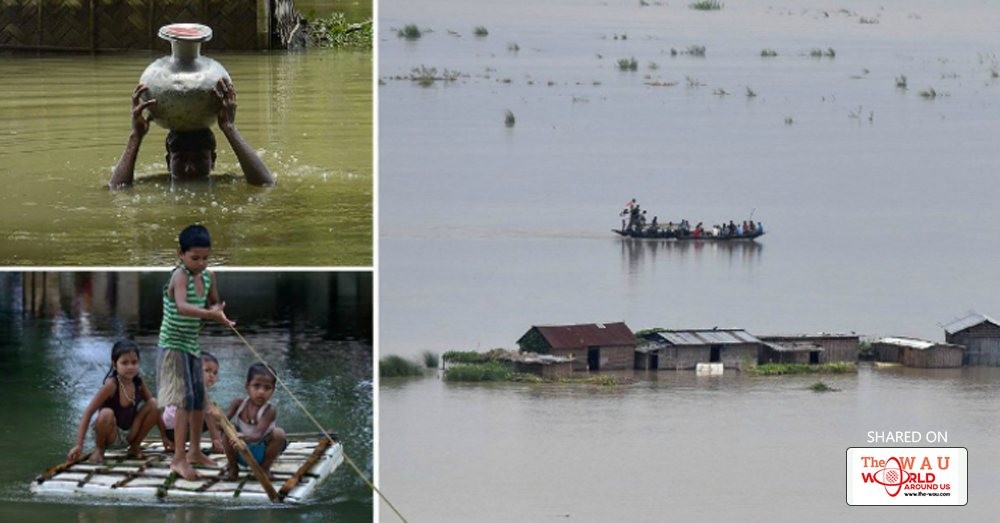Floods have devastated parts of northeast India, leaving at least 28 people dead and hundreds of thousands of others homeless.
Children have been pictured attempting to escape on makeshift rafts in Assam, while an aid helicopter carrying vital supplies went missing in Arunachal Pradesh.
Flooding and landslides have killed at least 28 people since mid-June.


Another 500,000 people have fled their homes in 800 villages across almost half of Assam’s 27 districts, and are now left homeless.
Nearly 20,000 people have been forced to take shelter in relief camps run by the state government.
On Tuesday, the authority said it had evacuated 400 students after their school campus was flooded in the western Nalbari district, 55 miles west of the state capital Gauhati.
In neighbouring Arunachal Pradesh state, roads to several districts have been cut off due to the heavy rains.
And an Indian air force helicopter flying food supplies to remote areas went missing in bad weather on Tuesday, according to India’s junior home minister Kiren Rijiju.
Mr Rijiju himself had a narrow escape when his helicopter was caught in a storm, and was forced to land in Arunachal Pradesh’s capital Itanagar.


Pramila Rani Brahma, Assam’s forest and Environment Minister, described the flooding situation as grave, adding that three weeks of heavy monsoon rains were also threatening to destroy Kaziranga National Park.
The park has the world’s largest population of one-horned rhinoceros, and is home to many other species of rare animals.
Forest guards have found one carcass of a rhino that died in the floods, and Brahma said vehicles on a highway knocked down six deer over the weekend.
Share This Post












